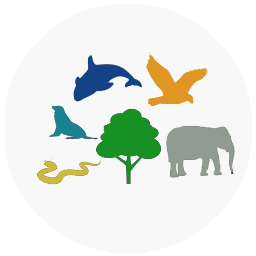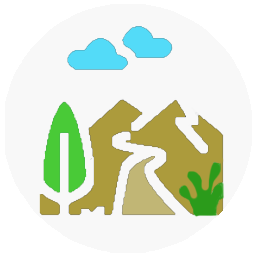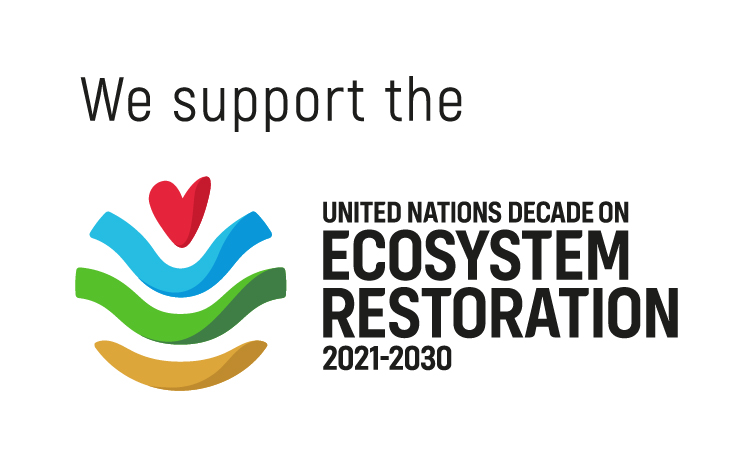Trees for Ecotourism™
Gnathang, Sikkim, India
Project Purpose
Trees for the HimalayasLocation

The plantation project is being carried out in the forest area of Gnathang which is situated at the fringe of Pangolakha Wildlife Sanctuary in Dzuluk, East Sikkim.

Enhancement of
Biodiversity

Carbon Sequestration

Promotion of
Ecotourism

Increase in
Green Cover

Generation of
Rural Employment

Improvement of
Wildlife Habitats






Why Trees?
Dzuluk or Zuluk, Gnathang is a small hamlet located in the temperate region of the Eastern Himalayas. It is located at the fringe of Pangolakha Wildlife Sanctuary. The sanctuary is home to several endangered species, including Red pandas, Himalayan bears, Wildlife dogs, and Musk Deer. There have also been sightings of Himalayan Monal, Kalij Pheasant, and Snow Pheasant among diverse bird species. The rich biodiversity and landscape of the region has rapidly accelerated the number of visitors in the region, emerging as a popular tourist destination among eco-tourists and bird watchers. As stated in a research paper by Slyvie Blangy and Hitesh Mehta, this surge in ecotourism has led to a growing emphasis on tree plantation, an essential aspect of this burgeoning tourist industry.[1]
However, this has brought forth significant challenges for the region of Sikkim. These challenges include excessive fodder extraction, an increase in human-wildlife conflicts, increased mass tourism in forested areas, and an outbreak of weeds and invasive species, as referred by a Biological Conservation study.[2] The need for infrastructural expansion to cater to an unregulated tourist inflow also puts pressure on the environment. Often, this necessity results in extensive deforestation and other forms of ecological damage. A thesis submitted to the University of North Bengal suggests that human-disturbed areas have exhibited marked changes in vegetation composition compared to relatively undisturbed regions along the corridor.[3]
To address these pressing issues, our project, ‘Trees for Ecotourism™’, acts as a crucial, feasible step in mitigating the emerging local socio-environmental issues. This plantation project aims to combat climate change by implementing activities that reduce forest emissions and enhance carbon sequestration. Visitors’ interest in eco-tourism activities such as bird-watching, nature walks, and nature photography is increasingly swiftly. Improving forest health through tree plantation will have a significant impact on promoting alternative tourism and improving local livelihood, creating a win-win situation in terms of socioeconomic, environmental, and cultural factors.
Tree Species
The variety of trees planted on our planting sites depends upon agro-climatic conditions and the benefit of those trees in terms of flowers, fruits, fodder, fuel, and non-timber forest produce for the local community as well as insects, birds, and animals. All trees planted will be species indigenous/naturalised to the planting site.
For the Trees for Ecotourism™ project in the Pangolakha Wildlife Sanctuary, the following tree species are selected:
Species like Gurash (Rhododendron arboreum), Lal Chimal (Rhododendron barbatum), Arupatey (Prunus nepalensis) are flowering trees. Asarey (Viburnum cordifolium), Rani Chaap (Michella excelsa), Gagun (Sauravia nepalensis), Nebara (Ficus hookeri), Phamphal (Persa americana) are fruiting species that can be used by the local communities for consumption and also as fodder when the trees are mature.
Gobre Salla (Abies webbiana), Tengre Salla (Picea smuthiana), Kharaney (Symplocos theifolia) have medicinal properties. The scent of Abies webbiana has the ability to ease moderate headaches and metal tension. The young shoot tips of Picea smuthiana can be used to make a refreshing tea that is high in vitamin C. The diluted juice of Symplocos theifolia can be taken orally in case of diarrhea.
Kapasey (Acer campbellii), Uttish (Alnus nepalensis), Jiganey (Eurya japonica), Malingo (Himalayacalamus asper) can be used for fuelwood that can support that livelihood of these communities and reduce pressure on forest resources.
Social Impact
We are committed to generating employment opportunities for the local communities, as the enhancement of socio-economic conditions within these communities is a fundamental component of ecotourism, as suggested by a case study by Tourism Management Perspectives.[4] Local residents actively participate in various stages of the project, from nurturing saplings in the nursery to transporting and planting them, as well as their ongoing maintenance. These tree plantation activities actively engage women, empowering them to shoulder the financial responsibilities of their household.
Tree plantation plays a pivotal role in fostering sustainable eco-tourism and wildlife tourism while simultaneously enhancing the overall ecological well-being of an area. The introduction of flowering species not only beautifies the region but also contributes to its aesthetic appeal.
In addition to its socio-economic benefits, tree plantation serves as a means of conserving the local flora and fauna by providing crucial food sources and natural habitats. The diverse array of birds and animals find both shelter and nourishment within these trees.
Apiculture is an alternative livelihood practiced by the inhabitants residing in the plantation area. Bees will pollinate those flowers, resulting in higher honey production. As a result, planting more of local floral plants promotes beekeeping, which allows people to increase their revenue as an alternative livelihood option.
To ensure that our endeavors have a positive environmental impact, we conduct thorough assessments of planting sites and meticulously select tree species that harmonize with the local environment and community needs.
It is worth noting that trees play a vital role in mitigating climate change by absorbing carbon dioxide from the atmosphere. A mature tree can sequester up to 20 kg of CO2 annually, contributing to cooler temperatures and reduced environmental stressors.
Adoption Summary
| Name of the Company | Number of Trees Planted | Fiscal Year |
| MakeMyTrip Foundation | 50,000 | 2023-24 |
[1] Blangy, S., & Mehta, H. (2006). Ecotourism and ecological restoration. Journal for Nature Conservation, 14(3-4), 233-236.
[2] Chettri, N., Sharma, E., & Deb, D. C. (2001). Bird community structure along a trekking corridor of Sikkim Himalaya: a conservation perspective. Biological Conservation, 102(1), 1-16.
[3] Chettri,N.,2000. Impact Of Habitat Disturbance Son Bird And Butterfly Communities along Yuksam–DzongritrekkingtrailinKhanchendzongaBiosphereReserve. PhDthesis,NorthBengalUniversity,Inda.
[4] Ashok, S., Tewari, H. R., Behera, M. D., & Majumdar, A. (2017). Development of ecotourism sustainability assessment framework employing Delphi, C&I and participatory methods: A case study of KBR, West Sikkim, India. Tourism Management Perspectives, 21, 24-41.









